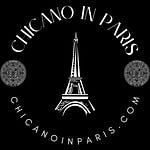The other day I saw on the news that The Orange Troglodyte™ had some unflattering things to say about France and mentioned that Hitler gave a speech from the Eiffel Tower. Look, you know he’s dumber than a freshly pinched turd out of a rabid dog’s ass, but a lot of people take his word as fact so let’s learn a little more about Hitler and the Eiffel Tower…
Paris fell in 1940. The swastika hung from the Arc de Triomphe. German boots echoed through the streets. But one of the city’s most iconic symbols—the Eiffel Tower—managed a quiet, brilliant act of rebellion. When Hitler arrived, expecting to ascend the Iron Lady for a triumphant photo op, he found the elevators mysteriously out of service. If he wanted that view, he’d have to climb the 1,665 iron steps himself.
Spoiler: he didn’t.
The Tower wasn’t broken by accident. French Resistance fighters had intentionally sabotaged the lift cables before the Nazis arrived. It was subtle, nonviolent, but incredibly symbolic. While the rest of the city was being swallowed by occupation, the Eiffel Tower—usually a beacon of French pride—became a kind of passive protest. It stood tall, unreachable, and just out of the Führer’s grasp.
It’s one of those moments in history that feels like folklore—but it’s true. Hitler visited Paris for only a few hours in June 1940. He toured various landmarks, but skipped climbing the Tower. After the war, it was revealed that the Resistance had cut the elevator cables and left them that way throughout the occupation. The Germans never managed to restore them.
For four long years, the Eiffel Tower refused to give the Nazis what they wanted: a propaganda image from its summit. It became a silent monument to French defiance—right in the heart of occupied territory. After the Liberation in 1944, the cables were quickly repaired, and the Tricolore once again flew from the top.
And no—despite recent claims made by certain historically illiterate Orange Troglodytes™, Hitler never gave a speech from the Eiffel Tower. That’s fiction. He barely set foot on it. His propaganda machine made sure the photo of him with the Tower in the background went global—but that’s all he got: the background.
What the world didn’t see was the quiet victory inside the Tower. A bit of metal and nerve, sabotaged by people who understood that sometimes resistance isn’t about weapons—it’s about denying the enemy a symbol.
The Eiffel Tower stayed standing. But more importantly, it stayed French.








